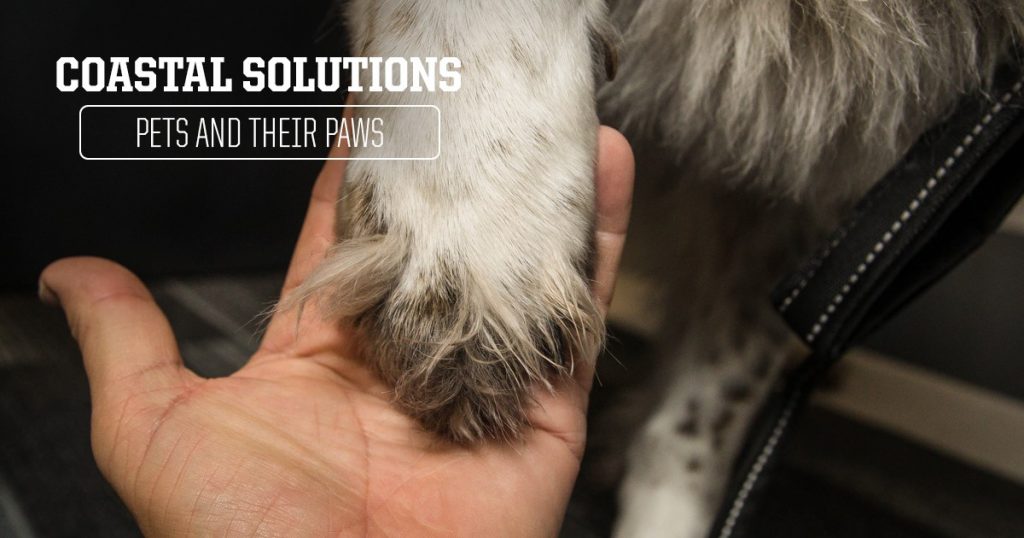
Pet Care 101: Dog Paws
If tromping barefoot in the snow, mud, or through a field filled with thorns and stickers doesn’t sound like fun, imagine how your dog feels. Sure, they have footpads that can grow stronger with use, but even the most active dogs can experience drying, cracking, cuts, blisters, burns, frostbite, tears, and poked paws. Caring for your four-legged friend starts with a few basics.
Pawfect Health
Keeping your pet’s paws healthy takes just a few minutes per day. Keep the hair around their paws trimmed so that the hair does not come into contact with the ground. If you live in an area that gets snow, this can help prevent ice from forming between the pads. For rainy regions, this helps speed the drying process. Also, keep their nails trimmed so you don’t hear a ‘click’ when they walk on hard surfaces.
Want to make your pet really happy? Apply a thin layer of pet-specific ointment to their pads every couple of days. This can help heal or avoid cracks. Be sure to rub it in thoroughly. That way your fuzzy friend doesn’t just lick it off.
Daily Checkup
Some dog experts advise checking your dog’s paws every time they come back inside. But who has time for that? Instead, do a daily check including a good once-over every time they come back from a hunting trip or nature hike. Look between their pads for bee stings, cheat grass, foxtails, as well as cuts and scrapes. Left alone, these can fester and put your pet through a lot of pain.
If you do find a small cut or you need to remove a thorn, take the extra time to wash their paws with soap and water or a topical antiseptic. For big cuts and wounds, get to your vet.
The Hard Truth about Concrete
Streets and sidewalks are rough. If your dog doesn’t normally walk or run on these surfaces they can quickly damage their pads. Concrete and pavement can also be extremely hot in the summer and very cold in the winter. To protect your pet, touch the street or sidewalk with your hand. If it’s too hot or cold for you then it’s likely too much for your furry companion.
If you cannot avoid concrete, streets, or thorn-infested hiking trails look into buying a set of Ultra Paws dog boots. These wonderful inventions slip onto your dog’s feet and are designed for all sorts of climates. Choose a quad (pair for dogs) for the snow and ice, rocky hikes, or to simply keep their feet dry. There are even wound boots to keep them from licking their paws while they heal.
Avoid De-Iced Streets and Salted Sidewalks
Salt and many de-icers can be toxic to your pet. If you do have to go through areas that de-ice the streets and walkways, be sure to wash your dog’s paws in warm water when you get home to keep the salt and chemicals from burning their feet. You should also keep them from licking the chemicals or salt from their paws.
We Love Dogs (and all pets)
Your nearby Coastal has several aisles of pet supplies, including high quality food, training tools, and dog care items for proper paw care. Stop by with your pet in tow and we’ll show you everything we have in stock.
Quick and easy pet tips
Always watch for signs of paw pain including limping, bleeding, and excessive licking.
Don’t let your pet drink from winter puddles and melted snow. These can contain de-icer and other chemicals that can be toxic to dogs.
Wash small cuts and abrasions with warm water and soap. If cuts are too large, or if the bleeding does not stop quickly, see your vet.
